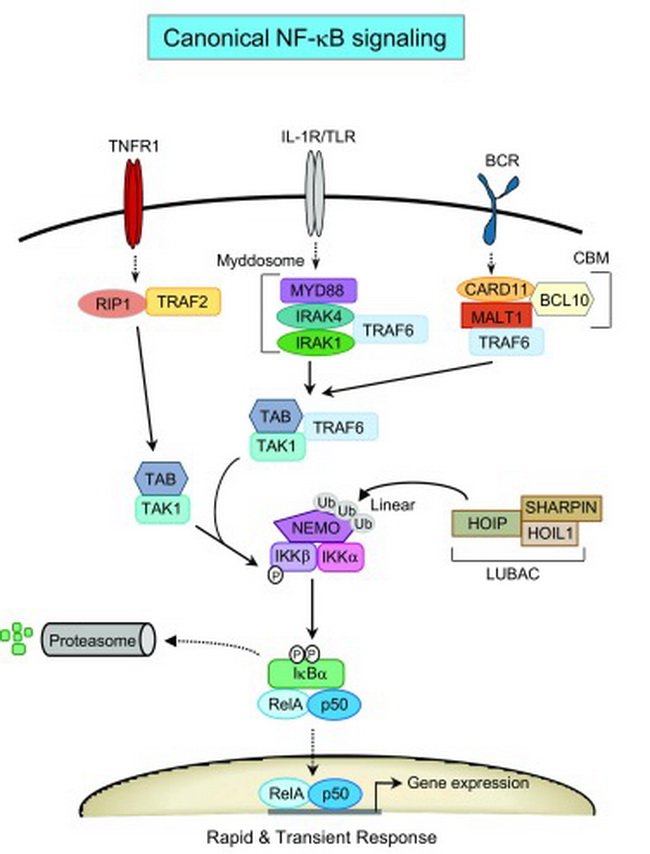MALT Lymphoma : Canonical NF-κB Pathway


Comments:
The final common mechanism of various genetic lesions in the pathogenesis of extranodal marginal zone lymphomas (MALT lymphomas) appears to be deregulation and inappropriate activation of NF-κB signaling pathway. NF-κB pathway consists of several dimeric transcription factors that play a key role in innate and adaptive immune responses. There are five NF-κB subunits - RelA (p65), RelB, c-Rel, NF-κB1 (p50 and its precursor p105), and NF-κB2 (p52 and its precursor p100). They are regulated by their inhibitors IκBα, IκBβ, and IκBε. NF-κB can be activated by extracellular signals via canonical (classical) and non-canonical (alternative) pathways. The canonical pathway (shown here) induces rapid but transient transcriptional responses. It is activated by the binding of signal molecule to one of the specific receptors such as BCR, TCR, TLR, and IL1R. Each receptor uses distinct adaptor proteins and signaling complexes, but ultimately they all act on the IKK complex consisting of catalytic subunits IKKα and IKKβ, and a regulatory subunit NEMO. Subsequent steps consist of phosphorylation, ubiquitination, and proteasomal degradation. NF-κB dimers like p50/RelA and p50/c-Rel are released and relocate to the nucleus to regulate gene expression. Image source: Schreuder MI et al. Novel developments in the pathogenesis and diagnosis of extranodal marginal zone lymphoma. J Hematop. 2017 Dec. 10(3-4): 91-107. Cropped from the original and used under Creative Commons Attribution 4.0 International License.



